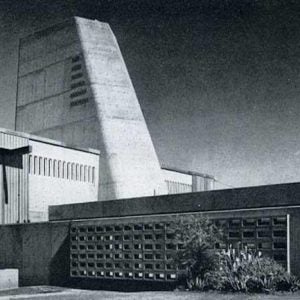General Electric’s first-of-a-kind Global Laser Enrichment process has entered its second, commercial feasibility stage. GE’s Kevin Walsh, senior vice president, nuclear fuel cycle, explains the next steps of development of the isotope separation process, licensed from Silex Systems in 2006, that uses lasers to selectively excite U-235 atoms in gaseous uranium hexafluoride.
Nuclear Engineering International: What is the current status of the global laser enrichment project?
We completed phase one, the test loop facility, at the end of quarter one and were very pleased with the results, which told us from a technology standpoint, we have moved to phase 2, the commercial design optimisation phase.
What that means is that now we know that the general technology design works, we have to optimise that design into a commercial-scale facility and equipment.
Although we haven’t exactly set a date, but roughly in 2012 we expect to be making a decision as we complete the phase 2 process.
Then, the first question is do we build, and then, how big should the facility be, based on the market, and based on equipment needed. We have a lot of work to do between now and then to determine what that would look like.
If that decision is made to move forward, then the project would move to phase 3, which would be construction of a commercial facility in the Wilmington location.
Nuclear Engineering International: How small is the test loop?
It is nowhere near commercial scale, although it is much much larger than lab scale. It is scalable to commercial size from where we are right now; the results we’ve gotten come equipment that wouldn’t fit in this room [a small conference room perhaps 36 sq m/100 sq ft]
Nuclear Engineering International: Are you saying that it is more expensive than it needs to be?
I would not say that it is more expensive than it needs to be. What we need to do in this phase, is to continue to run the test facility, and we have to optimise the equipment design.
If you would ask me, ‘will we exactly scale up what exists today?’ The answer is, no, we have a lot of work to do to optimise the design, to use less electricity, to consider what materials we use, how we would connect different pieces of equipment together. A lot of things in this phase are technical, but a lot are commercial, and they affect how much the process will cost, both in capital and operating costs.
Nuclear Engineering International: So it is all about commercial feasibility?
Yes, we probably should call it that!
Nuclear Engineering International: How long will it take build?
I don’t know. If you look at the other enrichment facilities to see how long the equipment installation took, that’s what we’ll be doing. But we don’t know until we get commercial design.
Nuclear Engineering International: Would you expect some variability in construction and commissioning times, given that the process is first-of-a-kind?
I would hope that we will have figured most of that out with test loop and commercial design optimisation stages. If you think of the facility, a large percentage of the facility is equipment that is operated in other plants around the world; the pumps and motors are proven technologies. There is only a portion of this equipment that is first of a kind equipment. It is too early to say what that means, or how much it will cost. I hope that the answer that we get back is that we have worked most of the issues out during commercial design phase so there will be no surprises.
Nuclear Engineering International: And the facility is planned for Wilmington? How will that play out with the regulator?
In terms of licencing, the environmental impact statement is in front of the NRC now, and a final report should be completed by the end of 2011; perhaps it will be the beginning of 2012 when we would expect it to be approved.. That whole process is going along smoothly. The NRC has had public meetings in Wilmington, and it has been positively received. NRC has also made public comments that the process is going smoothly.
Nuclear Engineering International: Once you started up this factory, would you close down the other?
We don’t enrich fuel today. It would be a brand new enrichment technology; and it would be the first factory in the USA.
We do fuel fabrication in Wilmington, and we will continue. That is core businesses is fuel cycle; it is one of three sites manufacturing BWR fuel. The other two are Kurihama, Japan and in Salamanca, Spain with our partners at ENUSA.
Nuclear Engineering International: So then you would have an enrichment and fuel fabrication facility in the same place?
Exactly. We like the idea of having fabrication next to enrichment.






